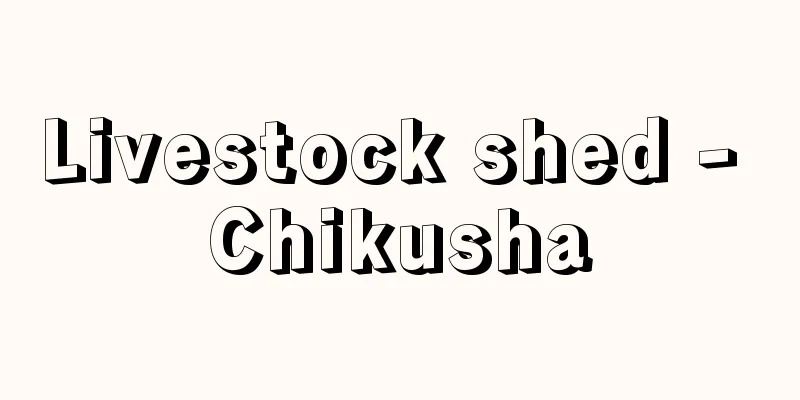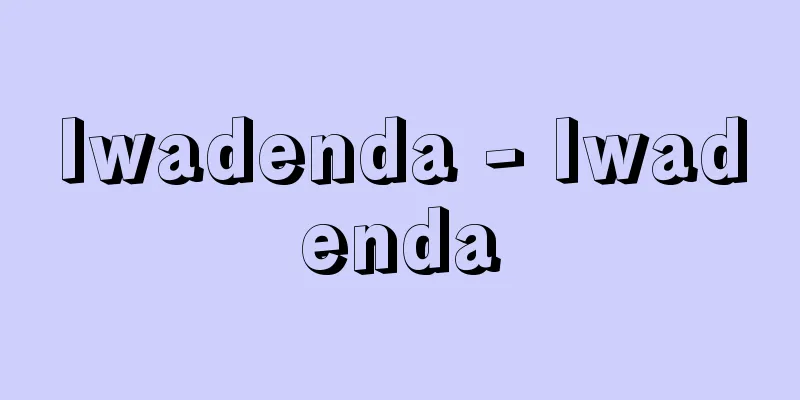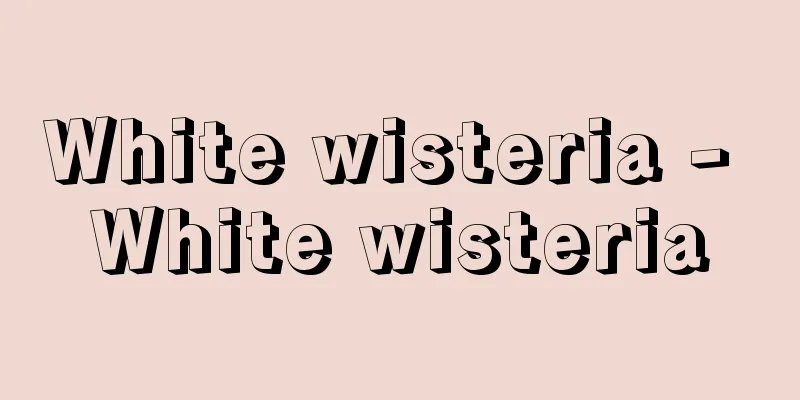Livestock shed - Chikusha

|
A building that houses and raises livestock, and functions as a livestock shed in combination with various auxiliary facilities. Livestock sheds are structured according to the purpose of raising different types of livestock, but generally they must meet various requirements in terms of the environment, workability, economy, safety, and sociality. Livestock management depends on the productivity of livestock, so it is desirable to have a livestock shed that provides an environment suitable for each livestock as much as possible, protects livestock from natural disasters and dangers to ensure their safety, and prevents adverse effects on the surrounding environment by paying attention to the disposal of livestock waste and noise prevention. In addition, the structure and facilities must be arranged with an emphasis on workability so that these various management tasks can be carried out efficiently. However, in order to meet the above requirements, excessive construction costs will be invested, which will lead to reduced profits, so livestock sheds are generally built within an acceptable range (production environment limit) that does not significantly affect the productivity of livestock, and with economics in mind. Specifically, attention must be paid to solar radiation control, ventilation and wind protection, ventilation, dust removal, and disinfection to protect livestock from heat, cold, and harmful substances. There are cowsheds, pig sheds, chicken sheds, etc. depending on the type of livestock, and they are further subdivided depending on the purpose of each type. Depending on the breed, sex, developmental stage and production purpose, cattle sheds are classified into dairy cattle sheds, beef cattle sheds, breeding cattle sheds, nursing/growing cattle sheds, milking cattle sheds and breeding cattle sheds, and they may be built independently or two or more types may be housed together in one building. Depending on the housing method, cattle sheds can be classified as tied-up, small penned penned pens (drive-in type), or large penned penned pens (open type). Milking cattle sheds generally use the tied-up type, which uses a neck shackle called a stanchion stall, while beef cattle are kept using the drive-in type. Pig houses are divided into fattening pig houses, breeding pig houses, and breeding/fattening pig houses according to purpose, and breeding pig houses are further divided into farrowing pig houses, breeding male pig houses, and breeding female pig houses. They are also divided into pig pens and cages according to the housing method. Since the disposal of excrement from raising multiple pigs is an issue, the structure of the cage floor and the setting of the excrement area are also carefully designed. There are flat-laying chicken coops and vertical-laying chicken coops, which are classified as brooder coops, egg-laying coops, broiler coops, or breeding coops depending on the growth stage of the chickens they house and the purpose of rearing. Vertical rearing can be divided into cage rearing and battery rearing, and currently most chickens are reared in cages, with both egg-laying and broiler rearing being divided into open and windowless types depending on the wall structure. In the latter, lighting hours can be fully controlled artificially. Feeding, watering, and feces collection have also been automated, and the number of chickens managed by one person has increased significantly. [Nishida Tomoko] Source: Shogakukan Encyclopedia Nipponica About Encyclopedia Nipponica Information | Legend |
|
家畜を収容し飼育する建物で、いろいろな付属施設と組になって、畜舎としての機能を果たす。畜舎は家畜の種類別に飼育目的に応じた構造を備えているが、一般に環境性、作業性、経済性、安全性および社会性の諸要件を満たす必要がある。畜産経営は家畜の生産性に依存するので、できるだけ各家畜に適した環境を備え、自然災害や危険から家畜を守ってその安全性を確保し、家畜の排出物の処理や騒音防止に留意して周辺環境への悪影響を防止した畜舎が望ましい。またこれらの諸管理が効率よくできる作業性を重視した構造と施設の配置されたものでなければならない。しかし、以上の諸要件を満たすためには過大な建設費を投資することになり、利益の低下を招くので、一般には家畜の生産性に大きな影響を及ぼさない許容範囲内(生産環境限界)で、経済性を考慮した畜舎が建てられる。具体的には暑熱、寒冷および有害物から家畜を守るために、日射制御、通風と遮風、換気、除塵(じょじん)と消毒に留意する。家畜の種類別に牛舎、豚舎、鶏舎などがあり、種別目的に応じて、さらに細分化する。 牛舎は、品種、性別、発育段階および生産目的により、乳牛舎、肉牛舎、種雄牛舎、哺育(ほいく)・育成牛舎、搾乳牛舎、繁殖牛舎に区別され、それぞれ独立に建てる場合と、2種以上を一棟にまとめる場合とがある。その収容方式により、つなぎ飼い式、小さい囲いに放つ牛房式(追い込み式)、広い囲いに放す放し飼い式(解放式)牛舎の別がある。搾乳牛舎はスタンチョンストールとよばれる首かせを用いたつなぎ飼い方式が一般的で、肉牛は追い込み方式で飼われる。 豚舎は、目的によって肥育豚舎、繁殖豚舎、繁殖・肥育豚舎に分けられ、繁殖豚舎は分娩(ぶんべん)豚舎、繁殖雄(おす)豚舎、繁殖雌(めす)豚舎に細分される。また収容方式によって豚房式とケージ式に分けられる。ブタでは多頭飼育の糞尿(ふんにょう)処理が問題になるので、ケージの床の構造、排糞場所の設定にもくふうがなされている。 鶏舎には平面飼育鶏舎と立体飼育鶏舎があり、収容するニワトリの成長段階や飼育目的により育雛(いくすう)舎、採卵鶏舎、ブロイラー舎、種(しゅ)鶏舎に区分される。立体飼育にはケージ飼育とバタリー飼育があり、現在はほとんどケージ飼育で、採卵用、ブロイラー用ともに壁面構造によって開放式と無窓式の区別がある。後者では照明時間も人工的に完全に制御できる。給餌(きゅうじ)、給水、集糞も自動化され、1人で管理する羽数が著しく増大している。 [西田恂子] 出典 小学館 日本大百科全書(ニッポニカ)日本大百科全書(ニッポニカ)について 情報 | 凡例 |
>>: Chikushino [city] - Chikushino
Recommend
Chondrus ocellatus Holmes
A marine red alga that is used as a source of glue...
Meridian Ring
A device for precisely measuring the right ascens...
Yaro Hyōbanki - Yaro Hyōbanki
A book of reviews of young Kabuki actors. After th...
Fushan
A Chinese calligrapher, painter and poet from the...
Takamura Koun - Takamura Koun
Sculptor. Born in Edo. Real name Kokichi, maiden ...
Volcanic Ash Chronology - Volcanic Ash Chronology
…also known as tephra chronology. Large-scale vol...
Azuma Koto Song - Azuma Koto Song
...Along with the "Nosaimono" pieces, w...
Shinpei Ogura
Korean linguist. Born in Sendai. Graduated from t...
Ginkgo - Ginkgo
…They stay near the river mouth for a while and t...
Daijima type flora
Plant fossils found in the lower Miocene Tertiary ...
AA Meeting - AA Meeting
...A government-level conference of Asian and Afr...
Pioneer
…In France, there are many excellent Catholic chi...
Engyprosopon grandisquama (English spelling)
...They are not often used because they are small...
Kawamata [Hot Springs] - Kawamata
A hot spring in the upper reaches of the Kinugawa ...
Diazotization - jiazoka (English spelling) diazot(iz)ation
This is a reaction in which an aromatic primary a...









